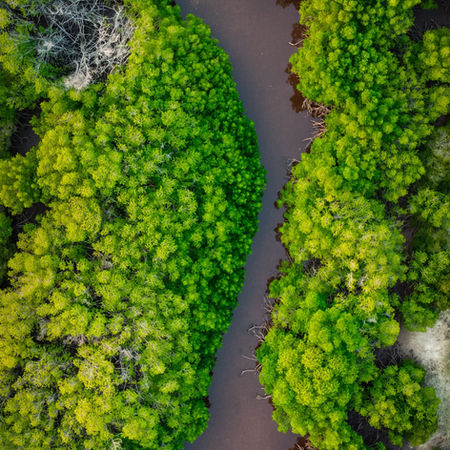
Reforestation Mangrove Ecosystem
Coordinating Indonesia’s Mangrove Reforestation along Southeast Java Coastal Line and Climate Action Initiative
When Indonesia intensified its national commitment to climate change mitigation, one of the most impactful initiatives was the expansion of mangrove reforestation projects across key coastal regions. As a project coordinator with biologist experts based in Jakarta, Sathi Consulting Asia (SCA) was entrusted with leading the organizational, regulatory, and partnership components of this ambitious effort — ensuring that every stage of the project, from documentation to field execution, met national standards and contributed meaningfully to Indonesia’s sustainability goals.
The project’s vision was clear: to restore degraded mangrove ecosystems across the islands of Java and South Sumatra, while building the scientific and administrative foundation for long-term climate resilience. Beyond the ecological goal of planting more than 10,000 new mangrove trees, the project required meticulous coordination between government institutions, local authorities, and environmental organizations. Our role was to transform this complex, multi-stakeholder initiative into a cohesive, well-documented, and compliant program.
The first phase centered on project registration through the Sistem Registri Nasional Pengendalian Perubahan Iklim (SRN PPI) — Indonesia’s national climate registry. This process demanded accuracy, transparency, and deep understanding of environmental policy frameworks. we led the preparation and submission of all technical documentation, ensuring the project’s alignment with national carbon mitigation goals and land-use classifications. This involved integrating geospatial data, reforestation plans, and baseline carbon sequestration estimates into the SRN platform, where our project became officially recognized as part of Indonesia’s broader climate action strategy.
Parallel to this, we worked extensively with the Dokumen Rencana Aksi Mitigasi (DRAM) — the official Mitigation Action Plan document that defines measurable steps for reducing greenhouse gas emissions. Collaborating closely with our environmental consultants and data analysts, we helped structure the DRAM to capture both ecological outcomes (such as mangrove growth rates and biodiversity return) and socio-economic co-benefits (including local employment and community engagement). This document became the backbone of our monitoring and evaluation framework, guiding how our success would be measured against Indonesia’s Nationally Determined Contributions (NDCs) under the Paris Agreement.
One of the most critical aspects of the project was coordination with national and local government partners. I served as the main liaison with the Ministry of Environment and Forestry (Kementerian Lingkungan Hidup dan Kehutanan), ensuring that all project activities followed the ministry’s regulatory standards and reporting requirements. At the same time, SCA built partnerships with provincial and local stakeholders in South Sumatra and along Java’s coastal regions, including local forestry offices, conservation NGOs, and community cooperatives. Through these relationships, we secured local support for field operations, resolved administrative bottlenecks, and ensured smooth communication between national policymakers and on-the-ground implementers.
As planting began, coordination became both a logistical and scientific endeavor. Our field teams planted thousands of mangrove saplings across strategic coastal sites vulnerable to erosion and saltwater intrusion. Throughout the process, I oversaw the alignment between field reports and national databases, verifying that every hectare planted was accounted for in the SRN registry. Simultaneously, our biologists recorded the biodiversity returning to the newly restored areas — from mudskippers and mangrove crabs to migratory bird species — illustrating the rapid ecological response to restoration efforts.
The project’s results were both tangible and inspiring. Within the first cycle, over 10,000 mangrove trees were successfully planted and verified through SRN documentation. The project achieved full compliance with the national registration process, setting a precedent for transparency and accountability in reforestation projects. Furthermore, collaboration with the Ministry of Forestry strengthened institutional trust and paved the way for future partnerships under Indonesia’s climate mitigation agenda.
Equally important was the human dimension of the project. By involving local communities and regional agencies, we built a network of stakeholders who now share a common responsibility for maintaining and expanding mangrove ecosystems. The project not only enhanced coastal resilience but also contributed to livelihood opportunities, education, and awareness about the importance of nature-based climate solutions.
Reflecting on this journey, what made the project truly successful was the seamless integration of scientific knowledge, regulatory compliance, and collaborative management. SCA ensured that environmental restoration was supported by strong governance and data integrity — bridging the gap between ecological ambition and administrative execution.
This initiative stands as a model for how Indonesia can achieve climate action through coordinated, science-based reforestation. The restored mangroves now protect coastlines, sequester carbon, and provide vital habitats for countless species — living proof that effective management and collaboration can turn a vision of sustainability into a thriving, measurable reality.
Project Gallery


